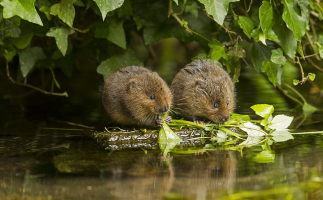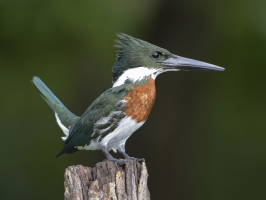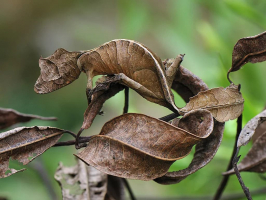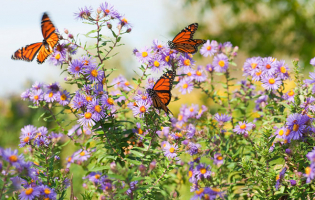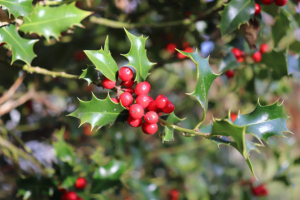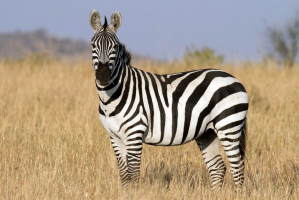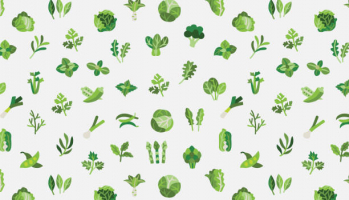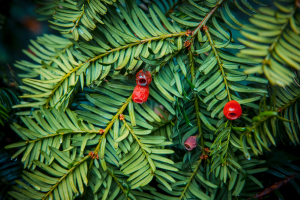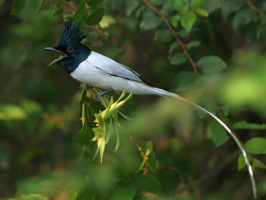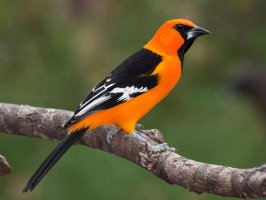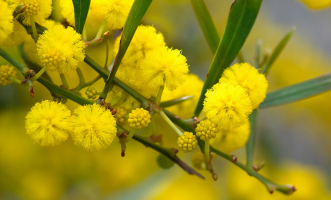Top 11 Fascinating Nile River Plants and Animals
The ancient Nile dwellers were well aware of their physical environment, particularly the various living species in the valley. Egyptian art is rich in ... read more...depictions of the animals and flora that the Ancients knew and adored. Different zones of plant life may be generally classified according to the quantity of rainfall in locations where no irrigation is used. Heat and abundant rainfall result in dense woods with a wide range of tropical trees and plants, including ebony, banana, rubber, bamboo, and coffee bush. Now let's discover the fascinating Nile River plants and animals.
-
Tropical rainforests may be found near the Nile's source, and bamboo is one of the trees and plants found there. Some bamboo species may grow at breakneck speed, up to one foot or more each day. Bamboos are a complex group of evergreen perennial flowering plants that belong to the grass family Poaceae's subfamily Bambusoideae. The internodal sections of the stem are frequently hollow in bamboo, like in other grasses, and the vascular bundles in the cross-section are distributed throughout the stem rather than in a cylindrical form. There is also no dicotyledonous woody xylem. Because of the lack of secondary growth wood, the stems of monocots, such as palms and giant bamboos, are columnar rather than tapering.
Bamboo is adaptable and has significant economic and cultural significance in South Asia, Southeast Asia, Indonesia, and East Asia, where it is utilized for construction materials, a food source, and a raw commodity, and is frequently featured in arts like as bamboo paintings and bambooworking. Bamboo, like wood, is a natural composite material with a high strength-to-weight ratio that may be used in structural applications. Bamboo has a similar strength-to-weight ratio to lumber, and its strength is comparable to that of a strong softwood or hardwood timber.
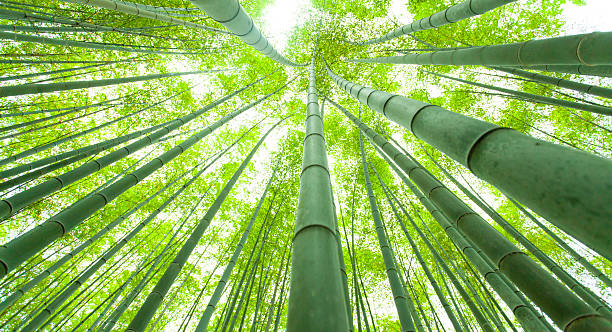
istockphoto 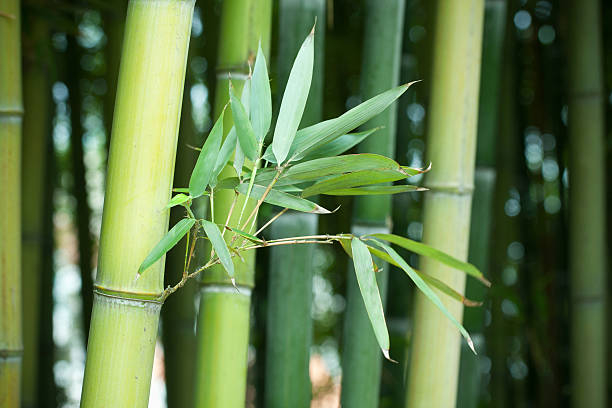
istockphoto -
Banana plants may be found in the tropical jungles upstream, near the Nile's source. Domesticated banana plants have extremely little genetic variation, making them highly sensitive to pests and diseases. The size, color, and hardness of the fruit vary, but it is normally elongated and curved, with soft flesh rich in starch covered by a rind that might be green, yellow, red, purple, or brown when mature. The fruits develop in clusters at the plant's crown.
The term "banana" is also used to describe the plants that produce the fruit. This includes additional Musa species such as the red banana (Musa coccinea), the pink banana (Musa velutina), and the Fe'i bananas. It can also refer to Ensete members such as the snow banana (Ensete glaucum) and the commercially valuable fake banana (Ensete ventricosum). Both genera are members of the Musaceae family of bananas.
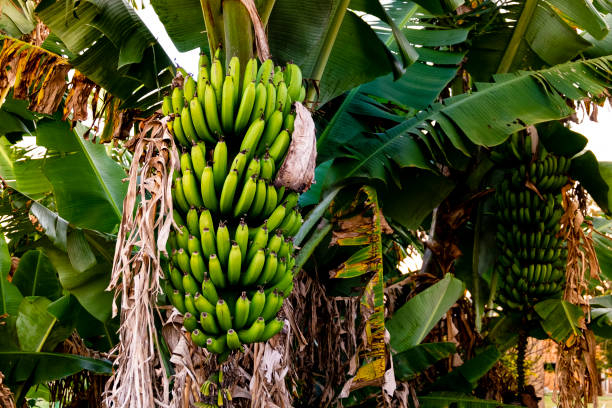
istockphoto 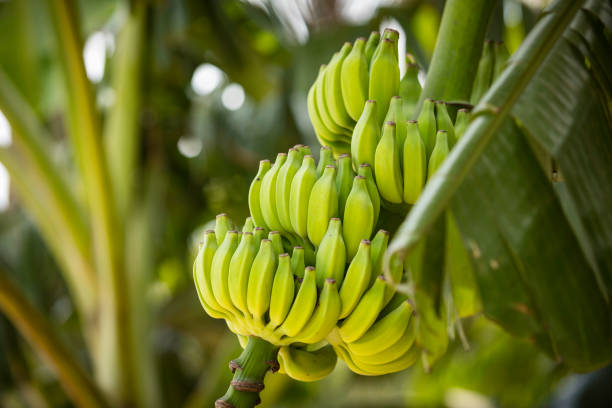
istockphoto -
The hippopotamus, which was once distributed across the Nile River system, is now restricted to the marshy Al-Sudd area of South Sudan and further south. A male hippopotamus is around 3.5 meters (11.5 feet) long, 1.5 meters (5 feet) tall, and weighs about 3,200 kg (3.5 tons).
Nile Hippos are very well adapted to their dual land and water existence. Their habit of resting in water during the day minimizes energy and food needs, allowing them to consume less food than other hooved animals. The Nile Hippopotamus consumes up to 88 pounds of grass every night. The Nile Hippopotamus is found solely in Sub-Saharan Africa. They live in rivers, lakes, and marshes ranging from Guinea in the east to Ethiopia in the west. Nile Hippos can submerge themselves for up to five minutes. Hippos come to the surface to breathe when sleeping.
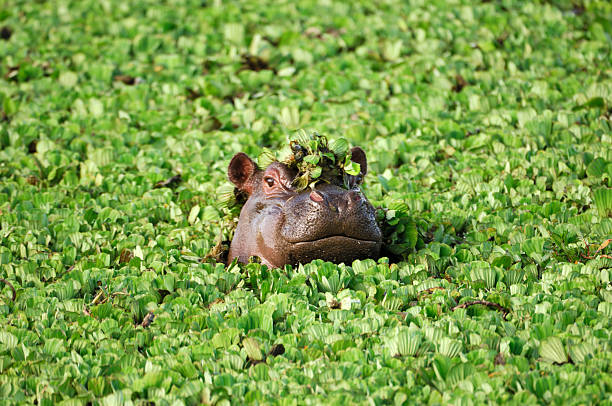
istockphoto 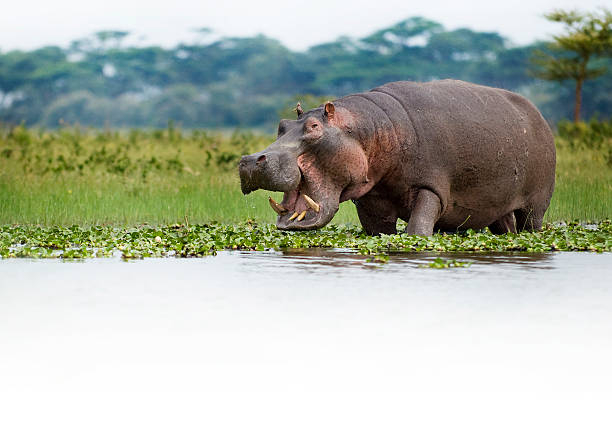
istockphoto -
The lungfish may be found all the way upstream to Lake Victoria. Unlike other fish, lungfish have one or two lungs through which they breathe air. Lungfish are most recognized for preserving ancestral Osteichthyes features, such as the capacity to breathe air, and ancestral Sarcopterygii structures, such as the existence of lobed fins with a well-developed internal skeleton. Lungfish are the tetrapods' closest surviving cousins.
Lungfish have been found in abundance since the Triassic period, according to the fossil record. While vicariance would suggest that this is an ancient distribution restricted to the Mesozoic supercontinent Gondwana, the fossil record indicates that advanced lungfish had a widespread freshwater distribution, and the current distribution of modern lungfish species reflects the extinction of many lineages following the breakup of Pangaea, Gondwana, and Laurasia. Historically, lungfish have been referred to as salamanderfish, however this word most commonly refers to Lepidogalaxias salamandroides.
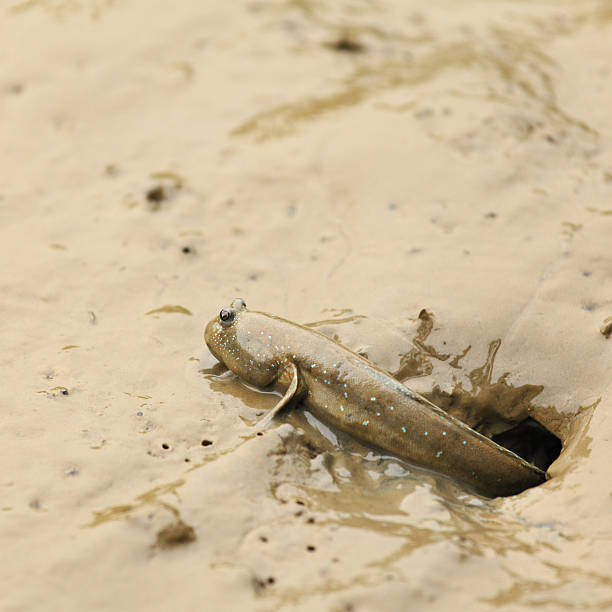
istockphoto https://www.youtube.com/watch?v=s0JdbWwLWgQ -
The Nile River watershed is home to three species of monitor lizards. They are among Africa's biggest lizards, with some reaching 1.8 meters (6 feet) in length when fully mature. Long necks, muscular tails and claws, and well-developed limbs characterize monitor lizards. Adult lengths of extant species range from 20 cm (7.9 in) in certain species to over 3 m (10 ft) in the case of the Komodo dragon, however the extinct varanid megalania (Varanus priscus) may have reached lengths of more than 7 m (23 ft).
The majority of monitor species are terrestrial, however arboreal and semi-aquatic monitors exist. While most monitor lizards are carnivorous, eating eggs, smaller reptiles, fish, birds, insects, and small mammals, depending on where they reside, some also consume fruit and flora.
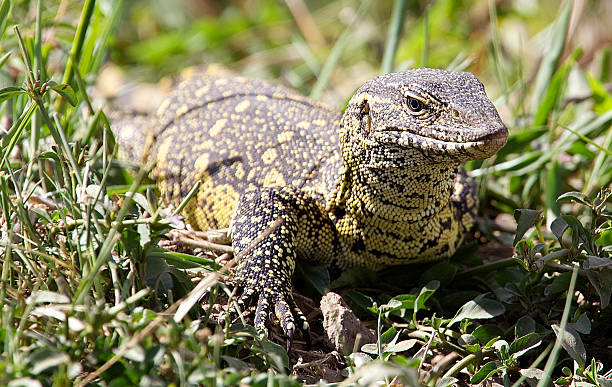
istockphoto 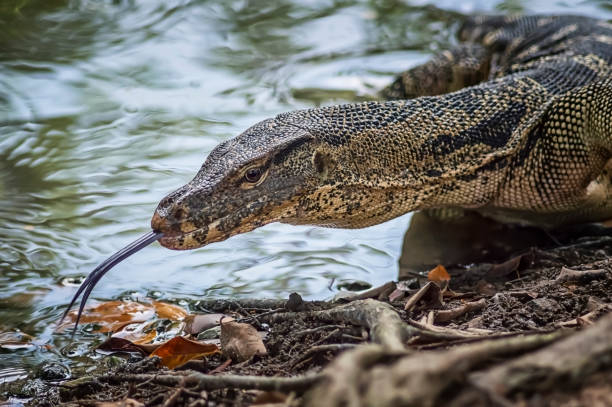
istockphoto -
The Nile crocodile may be found throughout the river. Crocodiles are the world's largest and heaviest reptiles in general, and the Nile crocodile is one of the largest, reaching lengths of up to 6 meters (20 feet). It is found across Sub-Saharan Africa, mostly in the central, eastern, and southern areas, and lives in a variety of aquatic settings such as lakes, rivers, swamps, and marshlands.
Nile crocodiles are opportunistic apex predators; they are an extremely aggressive crocodile capable of consuming practically any animal within their range. They are generalists, eating a wide range of prey. Their food consists primarily of various fish, reptiles, birds, and mammals. They are ambush predators who can wait hours, days, or even weeks for the right opportunity to strike. They are quick predators who wait for a prey item to reach within striking distance. Even quick prey is vulnerable to assault. Nile crocodiles, like other crocodiles, have a strong bite that is unique among other creatures, as well as sharp, conical teeth that penetrate into flesh, providing an almost impossible-to-loosen hold. They can exert strong force for long periods of time, which is useful for holding down heavy prey underwater until they drown.
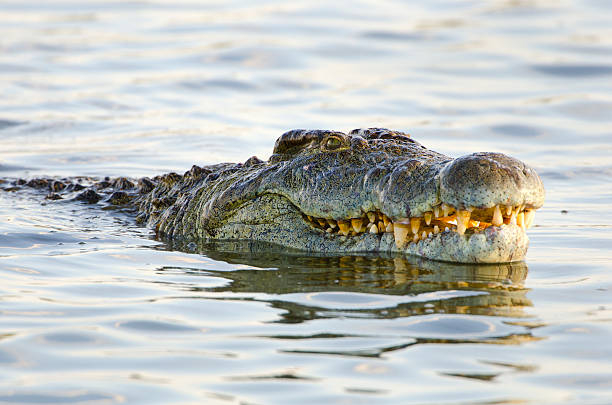
istockphoto 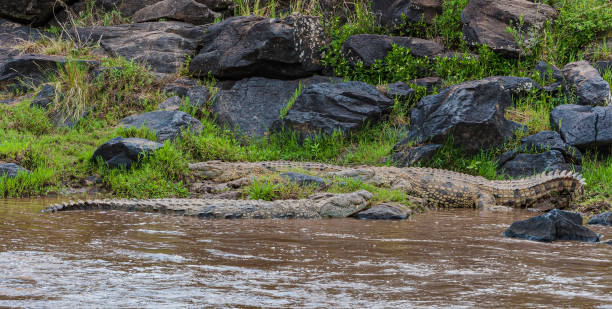
istockphoto -
The Nile perch lives in the Nile River system. This freshwater fish may grow to be extremely enormous, with some reaching weights of 200 kg (440 lbs) and lengths of 2 meters (6.6 ft). The Nile perch is an important economic and food-security fish in East Africa. Originally named Labrus niloticus, the species is also known as Centropomus niloticus among marine wrasses.
African snook, Victoria perch (a deceptive commercial name because the species is not endemic to Lake Victoria, but it has been brought there), and several local names in various African languages, such as mbuta or mputa, are common names. It is known as sangara, sankara, or chenku in Tanzania. It is known as capitaine in Francophone African countries. Giwan ruwa, which means "water elephant" in Hausa, is its name.
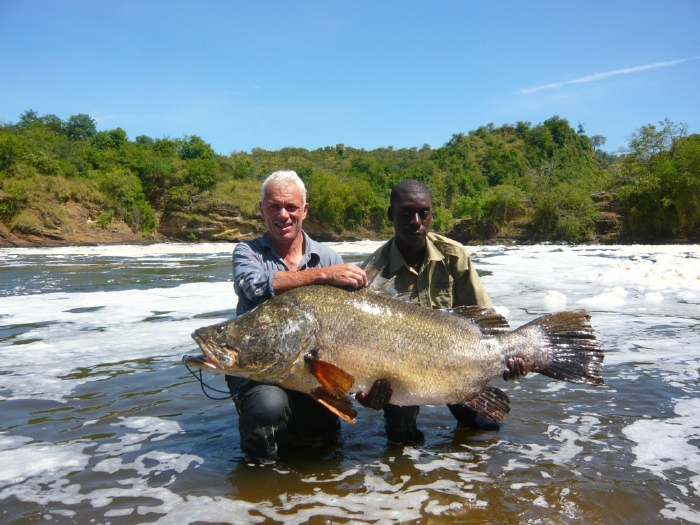
istockphoto https://www.youtube.com/watch?v=PtFPsY5gYSA -
The Nile River is home to the papyrus plant. The ancient Egyptians not only notably used the stem of the papyrus plant to produce paper, but also sails, fabric, mats, and ropes. It is a fragile herbaceous perennial native to Africa that grows in shallow water to produce tall stands of reed-like swamp vegetation.
Papyrus sedge (and its near cousins) have been used by humans for thousands of years, most notably by the Ancient Egyptians (as it is the source of papyrus paper, one of the first types of paper ever made). Plant parts may be eaten, and the very buoyant stems can be used to make boats. It is now often grown as an ornamental plant. It thrives in broad sun, flooded marshes, and on lake edges all throughout Africa, Madagascar, and the Mediterranean. It has been introduced to tropical locations all over the world outside of its native habitat (such as the Indian subcontinent, South America, and the Caribbean).
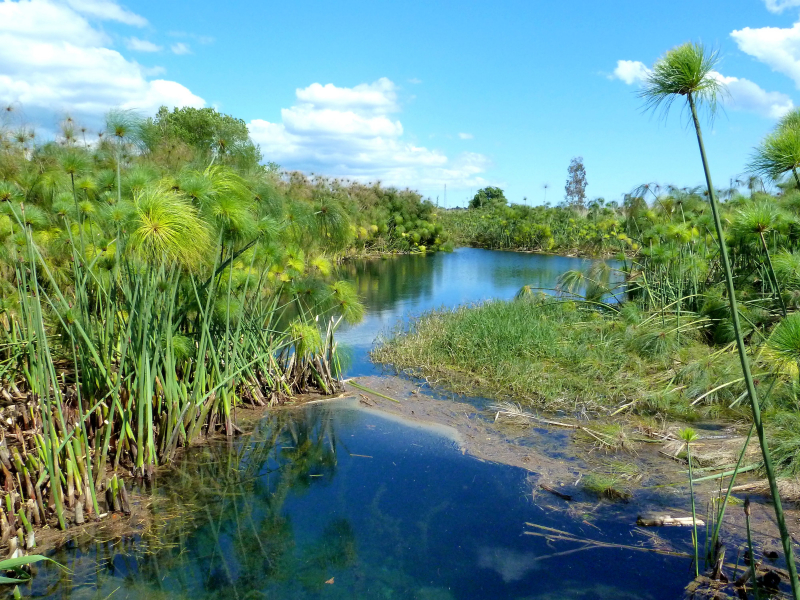
Pinterest https://www.youtube.com/watch?v=jYCc79WNEIY -
The Nile River watershed is home to the softshell turtle, which is distinguished by its flattened shell. The softshell turtle's flattened shell is hydrodynamically efficient and helps to its ability to swim quickly. Some of the world's biggest freshwater turtles are softshells, yet many can adapt to life in brackish environments. Most species were once classified as Trionyx, but the great majority have now been reassigned to different genera. These include the North American Apalone softshells, which were housed in Trionyx until 1987.
Their carapaces lack horny scutes (scales), however the spiny softshell, Apalone spinifera, does contain some scale-like projections, thus its name. The carapace is leathery and malleable, especially at the edges. The carapace contains a layer of solid bone beneath it in the center, as in other turtles, but this is missing at the borders. Some species contain dermal bones in the plastron, but they are not connected to the shell bones. These turtles' light and flexible shells allow them to travel more freely in open water or muddy lake bottoms. Because they have a soft shell, they can travel more quicker on land than other turtles.
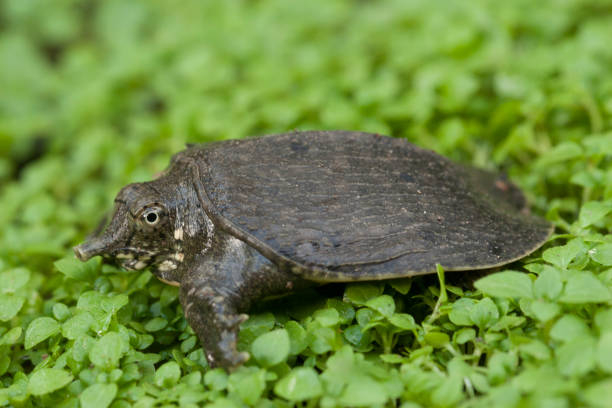
istockphoto 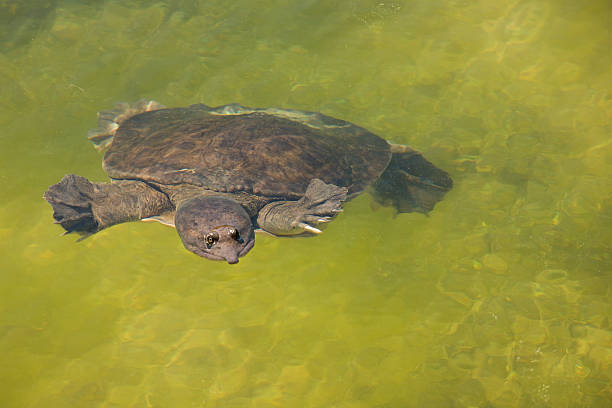
istockphoto -
The lower Nile River system is home to the tigerfish. It possesses dagger-like fangs that protrude when its jaw is closed, and it is noted for being vicious, whether predator or prey. Tigerfish can refer to a variety of fish families and is derived from official and vernacular links with the tiger (Panthera tigris). However, the principal species known as "tigerfish" are African and belong to the Alestidae family.
The goliath tigerfish (Hydrocynus goliath) is a well-known tigerfish. The record-breaking specimen is claimed to have weighed 70 kg (154 pounds). It is the biggest member of the Alestidae family and may be found in the Congo River system and Lake Tanganyika. Another well-known species, the tigerfish (Hydrocynus vittatus), is found in the southern Okavango Delta and the Zambezi River, as well as the two largest lakes along the Zambezi, Lake Kariba, which borders Zimbabwe and Zambia, the Kabombo River in Zambia and Cabora Bassa in Mozambique, and finally the Jozini dam in South Africa. Africa is home to both the goliath tigerfish and its smaller cousin, the tigerfish.
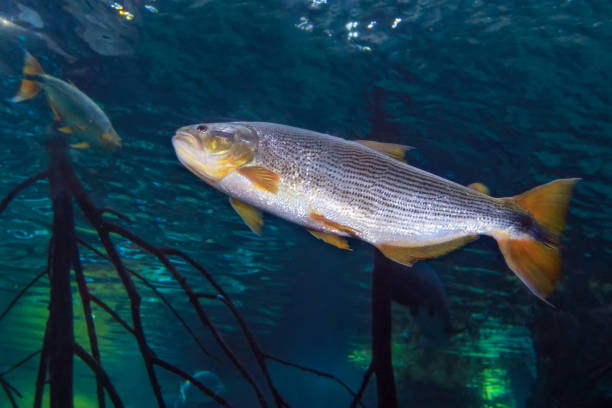
istockphoto 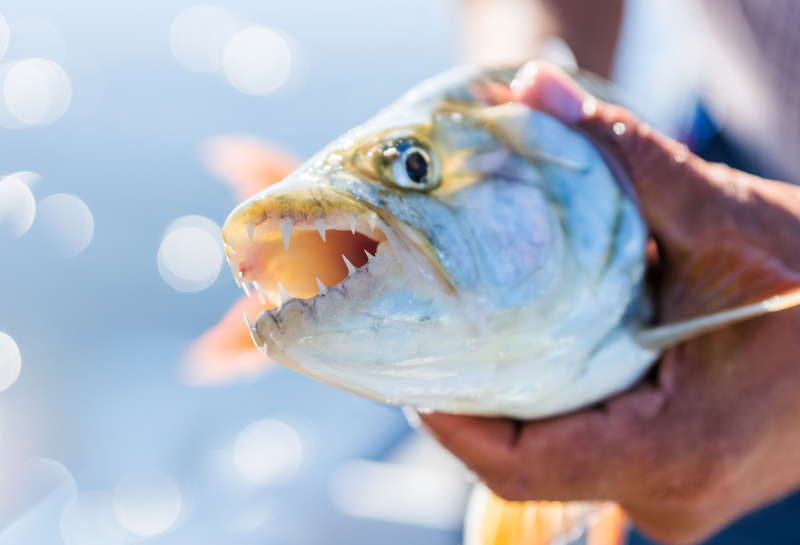
istockphoto -
The water hyacinth is an invasive plant in the Nile basin that originates in South America. Once introduced into the Nile River system, it expanded quickly, threatening the stability of local fishing businesses, impeding boat movement in afflicted regions, and interfering with hydroelectric power generation.
Water hyacinth, one of the fastest-growing plants, reproduces mostly by runners or stolons, which eventually generate daughter plants. Each plant may also generate thousands of seeds every year, and these seeds can live for more than 28 years. Water hyacinths (Pontederia crassipes) grow quickly, and mats can double in size in one to two weeks. They are claimed to increase by more than a hundredfold in plant count rather than size in a matter of 23 days. In their native range, these flowers are pollinated by long-tongued bees, and they can reproduce both sexually and clonally. The invasiveness of the hyacinth is related to its ability to clone itself, and large patches are likely to all be part of the same genetic form.
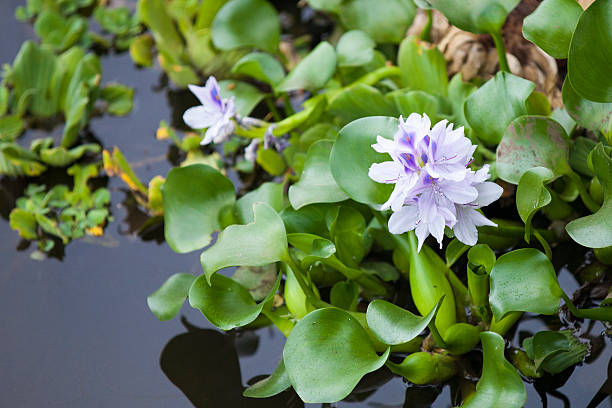
istockphoto 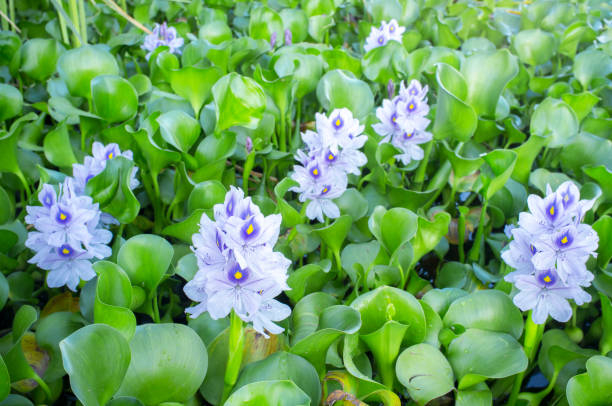
istockphoto















